Understanding Fish Behavior
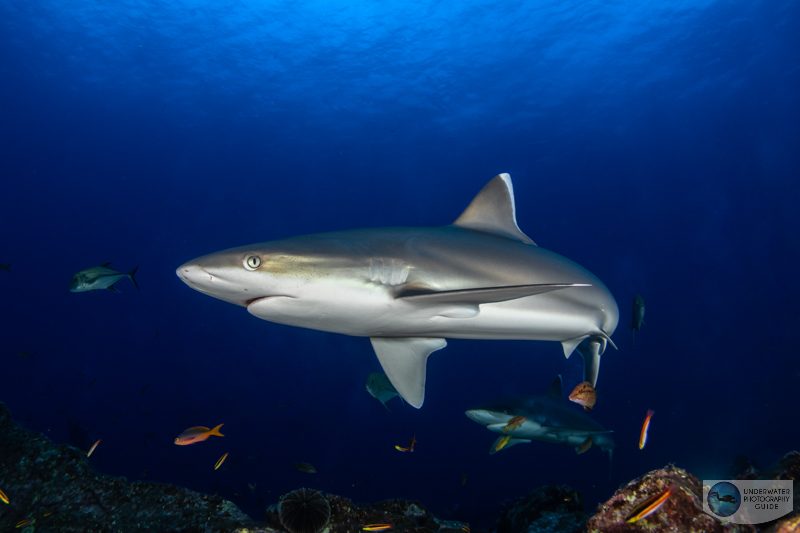
You need to know your fish, if you are going to get a good photo of one. Fortunately, once you have spent enough time observing fish, it is relatively simple to predict their behavioral and migration patterns. After observing fish behavior around the world, we have condensed our experiences into these tips that will enable you to approach incredible animals to your heart's desire.
1. Know Fish Migration Patterns and Habitat

Before you get in the water with a fish, you need to know where it's going to be, so it's important to study environment that you will be diving. Buy fish guide books before you dive and study the different fish you want to photograph. Make note of their behaviors and think about the advantages and disadvantages they will bring to you underwater. Note what and where your fish eats, nests, and inhabits and look for the right environment and food source. Finally, keep your eye out for migrations. Many species of fish will converge in a certain location, often to reproduce. Fish migrations can be some of the most amazing events to witness in the underwater world, but timing is everything. Some of our favorite migrations to photograph are the grouper spawning events in French Polynesia, great white sharks in Mexico, Alaska salmon runs, and market squid in California. For recommendations on where to witness a migration, contact Bluewater Travel.
2. Keep Your Eye Out for Cleaning Stations

As you may have noticed, fish don't have opposable thumbs. This makes it an awfully difficult for a fish to remove oceanic parasites from its body. Large fish will converge on a known location where smaller fish or shrimp, known as cleaners will swim around their body and eat parasites. It's a win-win for both the cleaner species and the fish being cleaned. Often the larger fish is a major predator, like a shark, that chooses not to eat the fish cleaning it. Getting close to photograph a fish being cleaned is difficult. Sometimes cleaner fish will swim away as you approach prompting the fish getting cleaned to swim away as well. Cleaning stations tend to be located at higher elevations in the topography, so if you stay low and hide behind rocks or coral, the fish may not notice you approach the cleaning station. If you decide that it's too difficult to approach cleaning behavior, your next option is to become the fish getting cleaned! This works especially well at cleaning stations that cater to larger fish like sharks and manta rays. Try to hover motionlessly above the spot on the reef where the cleaning station is located. You'll want to be about a two feet off the bottom. This imitates a fish waiting for a cleaning. Don't make too much eye contact, and the cleaning fish will start to approach you. At stations where the cleaning fish are angelfish or butterflyfish, you should be able to capture a really close photo of the school of angelfish/butterflyfish coming in to clean. At other stations, especially with shrimp, if you take your regulator out of your mouth and open your mouth, you just might have a shrimp or fish hop in to clean your teeth!
3. Understand Symbiotic Relationships
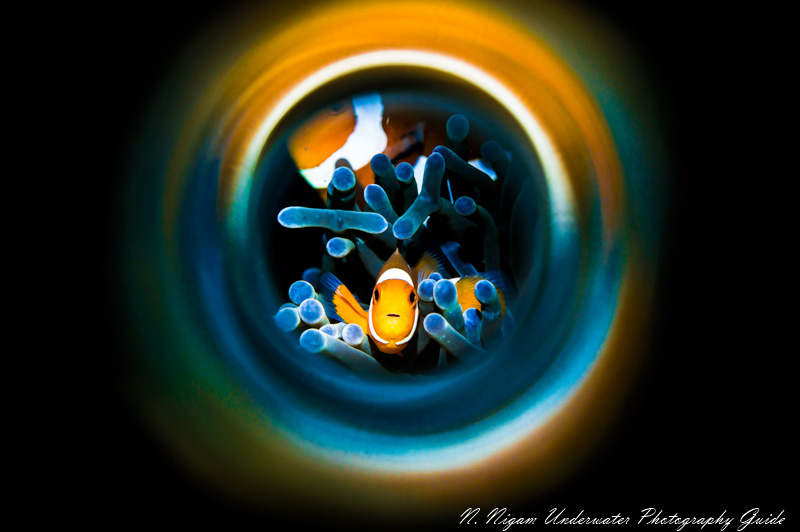
Many fish interact with another animal that is mutually beneficial for both - this is called a symbiotic relationship. One of the most famous symbiotic relationships is the one between anemonefish and anemones. Anemonefish live inside anemones for protection and anemones benefit from their waste. Relationships like this make it easier to find and photograph fish, because often if you see one subject, you'll see the other. The symbiote usually makes for a good background as well like the classic anemone tentacles behind a clownfish. Try to think about creative ways to isolate the subject and its symbiote, like using a snoot or magic tube.
4. Fish Are Friends, Not Food

Ah, the classic line from Finding Nemo. Yet in many ways it rings true. There are plenty of fish that live in the same spot for their surprisingly long lives. If you have the opportunity to visit them on a regular basis, many species are intelligent enough to become accustomed to divers or even specific individuals. Manta rays, for instance, are intelligent recognize themselves in their own reflection. They have been known to regularly greet divers in the same location and enjoy bathing in their bubbles for the fun of it. Wolf eels are another great examplee. They live with one mate their whole lives in a single den, year after year. I visit the wolf eel above a few times a year and he always comes out of his den to enjoy a divers company. I have also seen California sheephead follow divers out of curiosity and even play "tug of war" with a piece of kelp!
5. Hide Behind Your Underwater Camera Housing
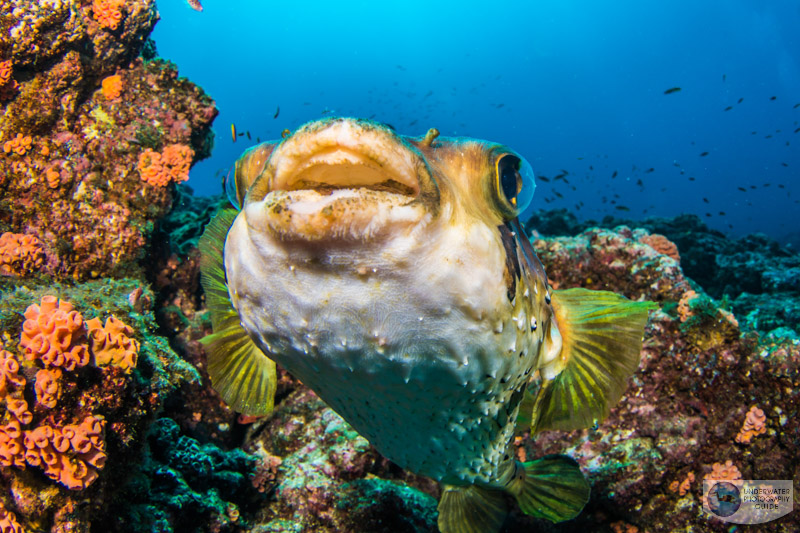
With many fish, hiding your head behind your underwater camera housing makes them forget that you are even there. This means you'll want to take photos of most fish while looking through your LCD or viewfinder and get close to your camera. This pufferfish photographed above only became curious after I hid my head behind my camera housing.
6. Don't Make Eye Contact
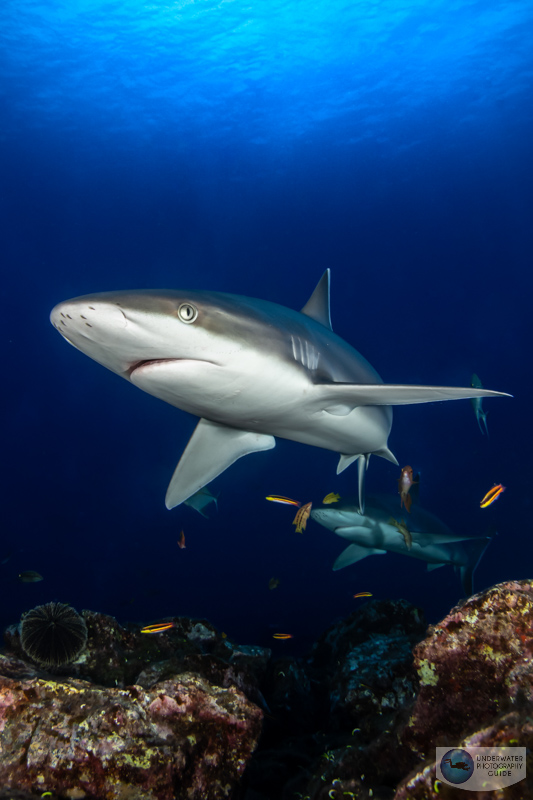
This rule is more important for larger animals that tend to be a bit on the skittish side - like sharks, balloonfish, barracuda, etc. Making eye contact, accross the animal kingdom, is a sign of aggression. This will scare away large predators. So if you avoid eye contact and look at your camera when taking photos, sharks will get just a little bit closer for a great shot.
7. Get Low
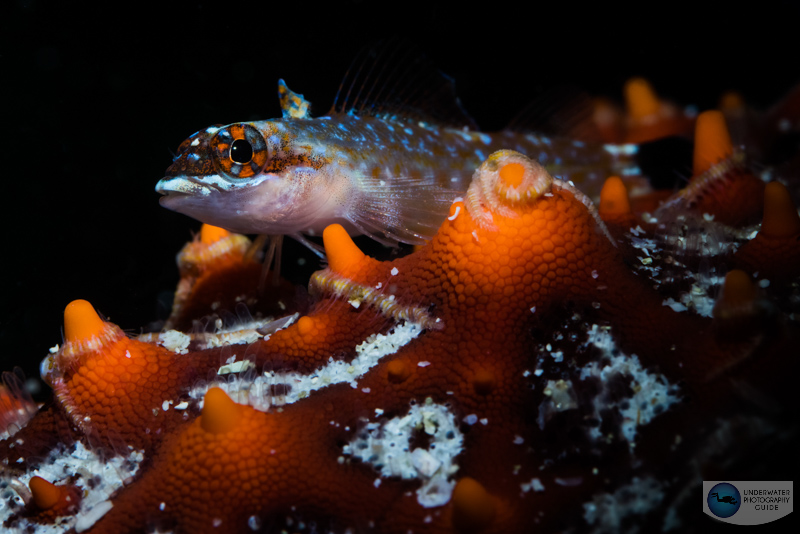
Getting low is a general rule for good composition in underwater photography. However, it's also a great rule for not scaring away fish! When you get low to the bottom fish, like this triplefin above, tend to become more relaxed by your presence. The higher up you are in the water column, the more they see you as a threat and swim away. This works with sharks and larger animals as well.
8. Hide Behind a Rock or Reef - Play the "Jack in the Box" Game
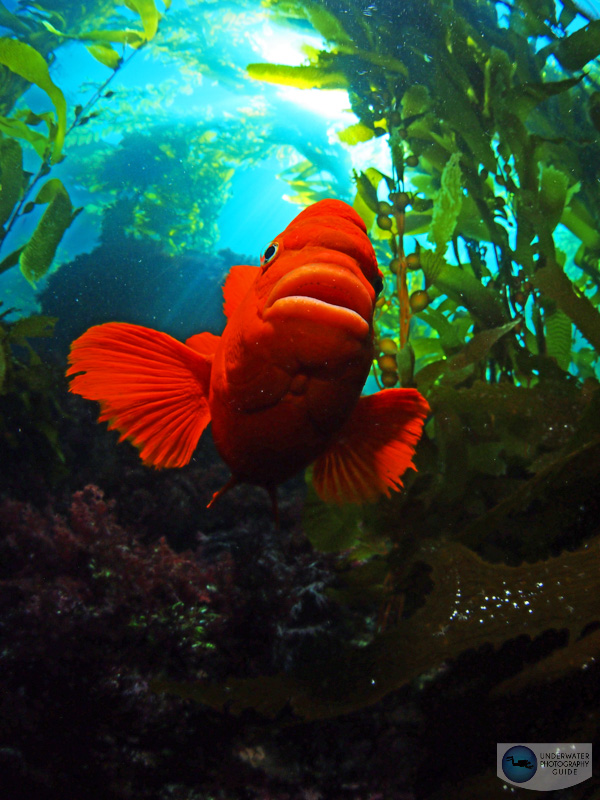
One of the best ways to sneak up on a fish is to hide behind a rock or a part of the reef so that they can't see you. Watch the fish for long enough to recognize it's swimming patterns. Often fish tend to swim in elaborate circles. Then pop up out of the reef at the opportune time and take your shot. You may want to be in a burst shooting mode during this time.
9. Recognize When Fish Are Stressed
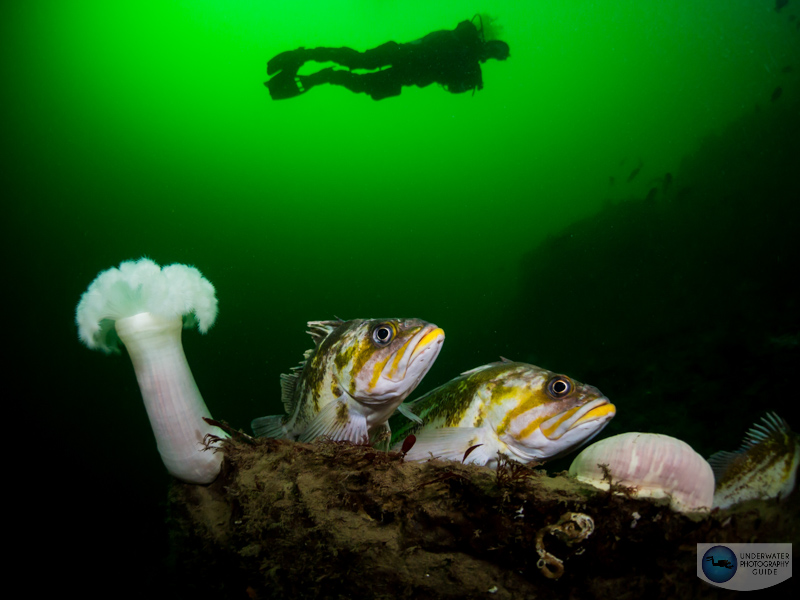
Recognizing when a fish is stressed can help you learn when you might miss a shot. Of course, try not to stress a fish out on purpose. But when you approach a fish, keep an eye out for changes in body language. Approach fish slowly and periodically stop to let them calm down. If they are about to swim away, they will often perch up on their pectoral fins, raise their dorsal fins, and widen out their operculums to make themselves seem larger. If you don't take the shot at this moment they will swim away. The fish in the photo above swam away after this photo was taken.
Tip: When most fish yawn (like frogfish or scorpionfish), it means their very stressed out and their giving you a warning message.
10. Understand Fish Aggression
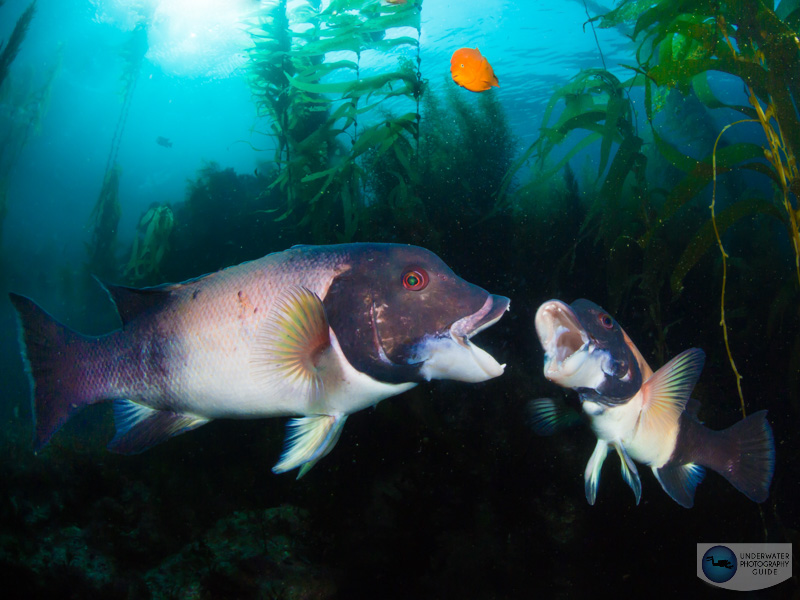
Mating season is the best time to observe and photograph some of the most brutal fighting on the planet. Often, competing fish will be so engulfed with the behavior that they will not mind a photographer photographing it. Look for fish that are sizing each other up before the battle. Often they will compare sizes and huff their operculums. Behavior like open mouths only lasts for a second, so be ready with your finger on the trigger. Also be aware that many fish find reflections to be an aggressor and will get aggressive with their reflections in your dome port.
Pro Tip: Observe and Observe Some More
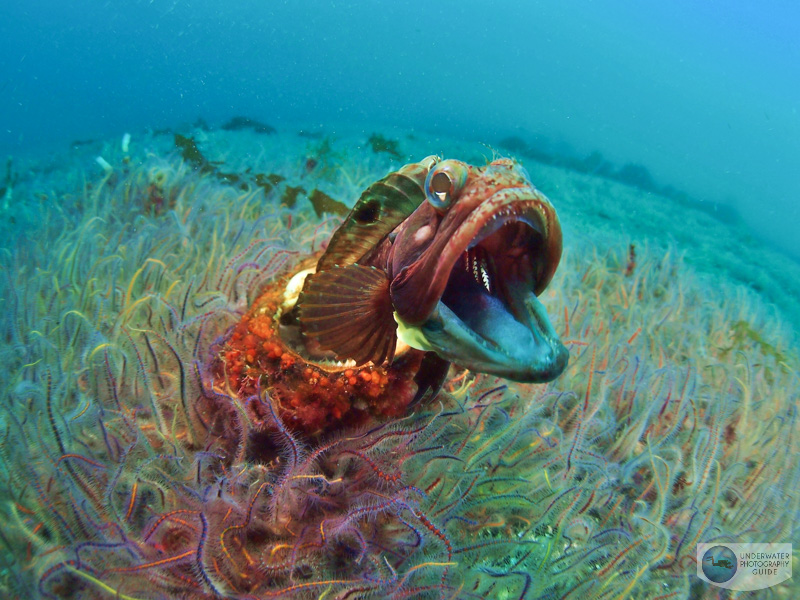
Constant observation and patience is the key to any good photography - but especially when you are photographing fish. Take as much time as you need to let their behaviors play out in front of your camera. Let them get comfortable with your presence. Some shots can take days of waiting for the right moment. In the photo above, it took 70 minutes for this Sarcastic Fringehead to get angry enough at his reflection in the dome port to come out of its shell.
RECOMMENDED ARTICLES
SUPPORT THE UNDERWATER PHOTOGRAPHY GUIDE:
The Best Service & Prices on u/w Photo Gear
 Visit Bluewater Photo & Video for all your underwater photography and video gear. Click, or call the team at (310) 633-5052 for expert advice!
Visit Bluewater Photo & Video for all your underwater photography and video gear. Click, or call the team at (310) 633-5052 for expert advice!
The Best Pricing, Service & Expert Advice to Book your Dive Trips
 Bluewater Travel is your full-service scuba travel agency. Let our expert advisers plan and book your next dive vacation. Run by divers, for divers.
Bluewater Travel is your full-service scuba travel agency. Let our expert advisers plan and book your next dive vacation. Run by divers, for divers.


































